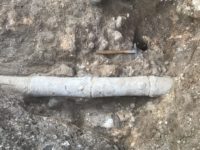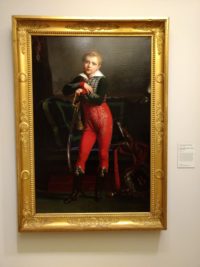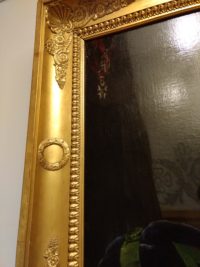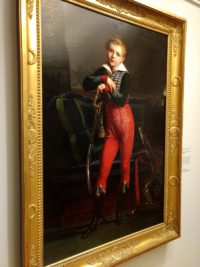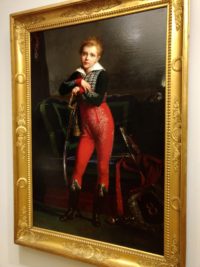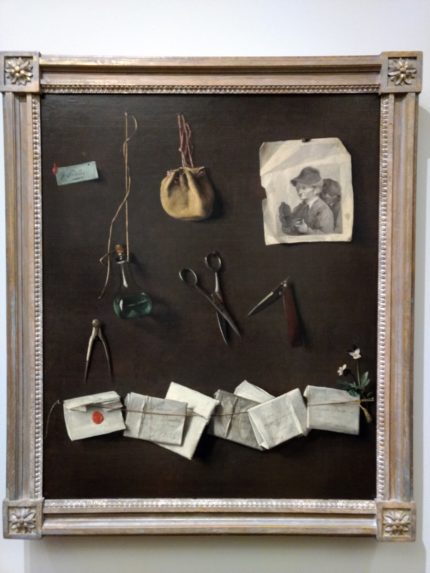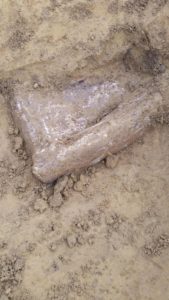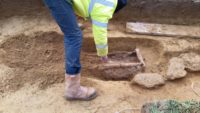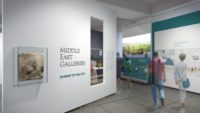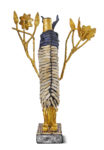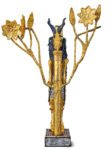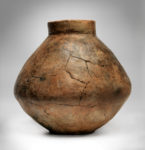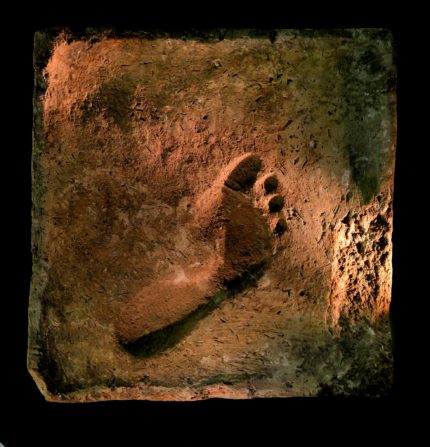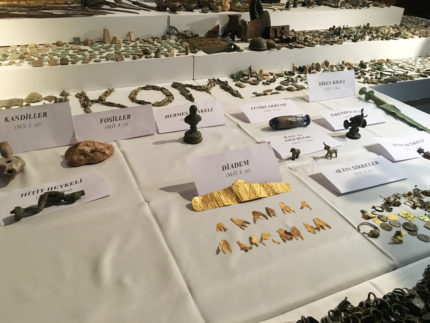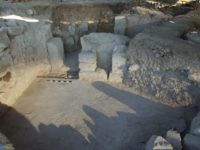 Archaeologists have unearthed remains of stone structures, Roman engineering and the cremains of several deceased legionaries in cooking pots at a Roman military camp just over half a mile south of Tel Megiddo in northern Israel. The monumental base (it was around 330 yards by 550 in area) is the only permanent, full-scale legionary camp discovered in the eastern Roman Empire. There are several in mainland Europe and we know there were major bases elsewhere in the Levant and east — Jerusalem, or rather, Aelia Capitolina, built on the ruins of Jerusalem after Titus’ razing of it in 70 A.D., had a large base — but they have yet to be found.
Archaeologists have unearthed remains of stone structures, Roman engineering and the cremains of several deceased legionaries in cooking pots at a Roman military camp just over half a mile south of Tel Megiddo in northern Israel. The monumental base (it was around 330 yards by 550 in area) is the only permanent, full-scale legionary camp discovered in the eastern Roman Empire. There are several in mainland Europe and we know there were major bases elsewhere in the Levant and east — Jerusalem, or rather, Aelia Capitolina, built on the ruins of Jerusalem after Titus’ razing of it in 70 A.D., had a large base — but they have yet to be found.
The site is known as Legio (later Arabicized to Lajjun) after the camp built in the first half of the 2nd century A.D. and for more than a century was home to the formidable Legio VI Ferrata, meaning the Sixth Ironclad Legion. In the wake of the Bar Kochba Revolt (132-135 A.D.), the emperor Hadrian kept them in the Legio camp to guard the strategically important supply, transport and communication lines between the coast and Jezreel Valley.
 Legio VI had a proud history of fighting under some of Rome’s greatest generals. They were with Julius Caesar when he spanked Vercingetorix in Gaul, then with Marc Anthony and after his defeat in the Battle of Actium, they served under Octavian. The Ironclads were transferred from Syria to Judea just before the Bar Kochba Revolt and would remain there through most of the 3rd century. They were sent to the eastern frontier and Legio was dismantled by command of Diocletian at the end of the 3rd century.
Legio VI had a proud history of fighting under some of Rome’s greatest generals. They were with Julius Caesar when he spanked Vercingetorix in Gaul, then with Marc Anthony and after his defeat in the Battle of Actium, they served under Octavian. The Ironclads were transferred from Syria to Judea just before the Bar Kochba Revolt and would remain there through most of the 3rd century. They were sent to the eastern frontier and Legio was dismantled by command of Diocletian at the end of the 3rd century.
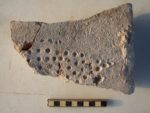 The site has been excavated regularly for years. In 2013 and 2015, archaeologists unearthed numerous ceramic tiles stamped with the mark of the Legio VI Ferrata, and even stamped with the imprints of the hobnails from their caligae, the legionary’s sandal that earned Caligula his nickname because he charmed the legions fighting under his father Germanicus when he wore a miniature pair as a little boy. They also found individual hobnails from those sandals, scales from Roman armour and the remains of infrastructure like clay pipes, sewer channels and buildings.
The site has been excavated regularly for years. In 2013 and 2015, archaeologists unearthed numerous ceramic tiles stamped with the mark of the Legio VI Ferrata, and even stamped with the imprints of the hobnails from their caligae, the legionary’s sandal that earned Caligula his nickname because he charmed the legions fighting under his father Germanicus when he wore a miniature pair as a little boy. They also found individual hobnails from those sandals, scales from Roman armour and the remains of infrastructure like clay pipes, sewer channels and buildings.
This season’s excavation was even more dramatic: they discovered the remains of a monumental gate that led to the base’s the principia, the religious and military headquarters.
The principia was the heart of the Roman military base, a huge complex some 100 meters by 100 meters. Grand in size and in design, it had a huge colonnaded façade as well as a grand colonnade inside.
“The principia was not just the legionary commander’s headquarters; it was also the legion’s shrine. It included an open courtyard that housed a sanctuary for the legion’s standards, the revered symbol of the unit,” Strauss told Haaretz. […]
The principia was also the site of the treasury, the armory, and was where the scribes worked.
As is so often the case, the latrines yielded treasures of great importance. The excavation unearthed hundreds Roman coins, glass, pottery, animal bones and assorted other detritus that had been cast down with the excrement to the delight of archaeologists 1,900 years later.
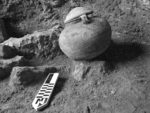 They also found a hand-dug cave inside the camp that held a cooking pot filled with the ashes of a fallen and cremated comrade. It wasn’t even the only one.
They also found a hand-dug cave inside the camp that held a cooking pot filled with the ashes of a fallen and cremated comrade. It wasn’t even the only one.
“Cremation burials in cooking pots were a common practice among Roman soldiers at that time. We found this kind of burial all around the site,” Tepper told Haaretz.
Finding one’s final resting place in a cooking pot was not atypical of Roman burial practices at other Roman military sites, in Israel and around the Mediterranean, Tepper added.
